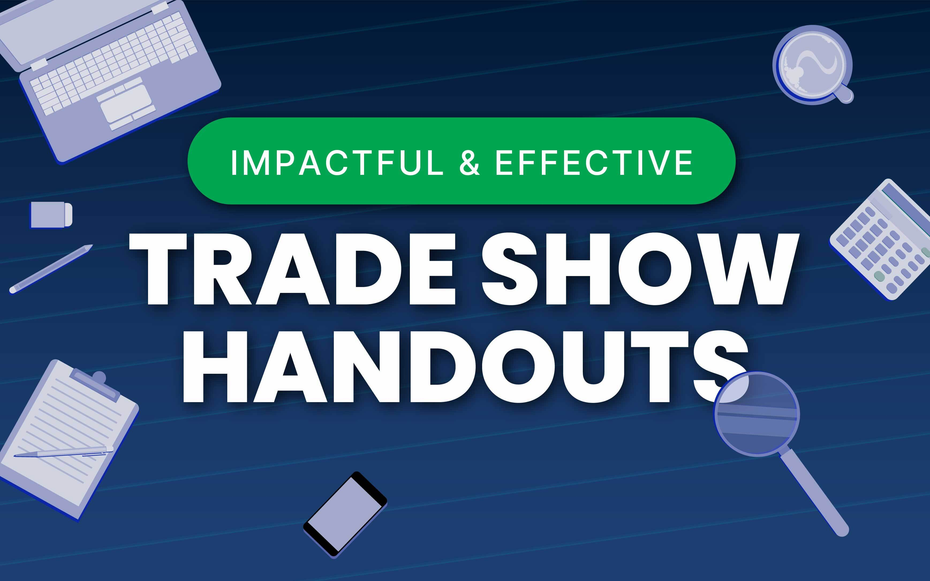At any given trade show, attendees are inundated with information—flashy booths, fast pitches, and tote bags packed with handouts and freebies. But after a long day of walking the floor, only a few brands truly stick.
Here’s the truth: most trade show materials get forgotten, tossed, or ignored. Not because people aren’t interested, but because the materials didn’t give them a reason to care.
If your handouts aren’t adding value, extending the conversation, or prompting meaningful action, they’re not working hard enough.
Here’s how to change that.
- Don’t Just Print—Communicate
It’s easy to fall back on printing a brochure or a product catalog. But in a sea of similar materials, the ones that make it home are the ones that communicate something useful, clear, and timely.
What should your handout do?
- Answer a question you know attendees are asking
- Solve a common pain point
- Reinforce a key benefit of your product or service
- Offer something exclusive or time-sensitive
Whether it's a one-sheet, comparison chart, or how-to guide, think of your handout as a conversation that continues after they’ve left your booth. Make the message simple, the design clean, and the content easy to absorb at a glance.
- Giveaways with a Purpose
Branded swag can be a great touch—but only if it serves a purpose beyond putting your logo on something. The best giveaways feel considered. They’re relevant, useful, and built to last beyond the show.
Aim for items that:
- Integrate naturally into a daily routine
- Support the type of work your audience does
- Reflect your brand values (quality, innovation, sustainability, etc.)
Instead of thinking, “What can we afford to give away?” try asking, “What would be useful enough for someone to keep—and what does that say about our brand?”
- Create Opportunities for Hands-On Engagement
Letting attendees interact with your product (or a sample of it) adds dimension to your message. It gives people something to remember you by—beyond your booth graphics or a quick conversation.
Consider how your handouts can include a tactile, exploratory element:
- Sample kits they can bring home
- Swatch books or material samples
- Trial access codes for digital tools
- Mini product guides tied to your live demo
Giving people something they can try or explore on their own makes your brand feel more approachable—and keeps your offering top of mind.
- Remove the Barriers to Follow-Up
Even the most interested lead can fall through the cracks if your materials make it hard to take the next step.
Your handouts should do more than share information—they should create a clear path forward. Make it easy to act:
- Include a single, focused call to action
- Add a QR code linked to a landing page, calendar link, or offer
- Keep contact details visible and easy to find
- Offer value in exchange for follow-up (e.g., access to a whitepaper, demo, or discount)
The easier you make it for someone to re-engage, the more likely they will.
- Keep Everything On-Brand
Lastly, remember that your materials are an extension of your booth, your team, and your brand. If your message is about innovation, your handouts shouldn’t feel generic. If you’re emphasizing sustainability, your giveaways and packaging should reflect that.
Every detail contributes to the impression people take home—from tone of voice and visuals to how your handouts are organized or handed out. When everything aligns, your message is more memorable, and your brand feels more cohesive.
In the end, trade show materials aren’t just collateral. They’re tools to extend your presence, deepen connections, and open the door to continued conversations.
By designing handouts and giveaways with purpose, you’ll stand out from the crowd—not just at the event, but in the days and weeks that follow.
 Default Currency
Default Currency


